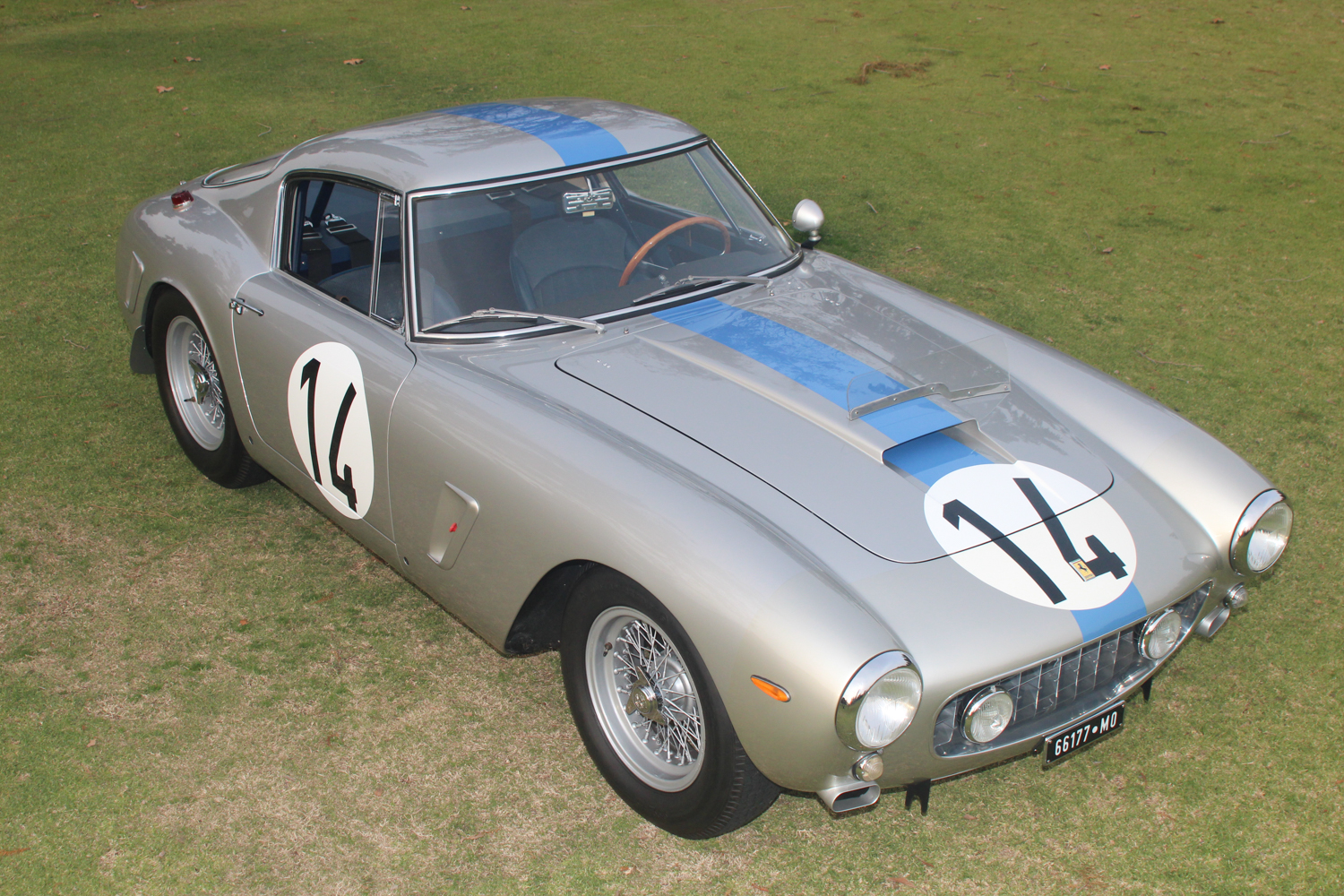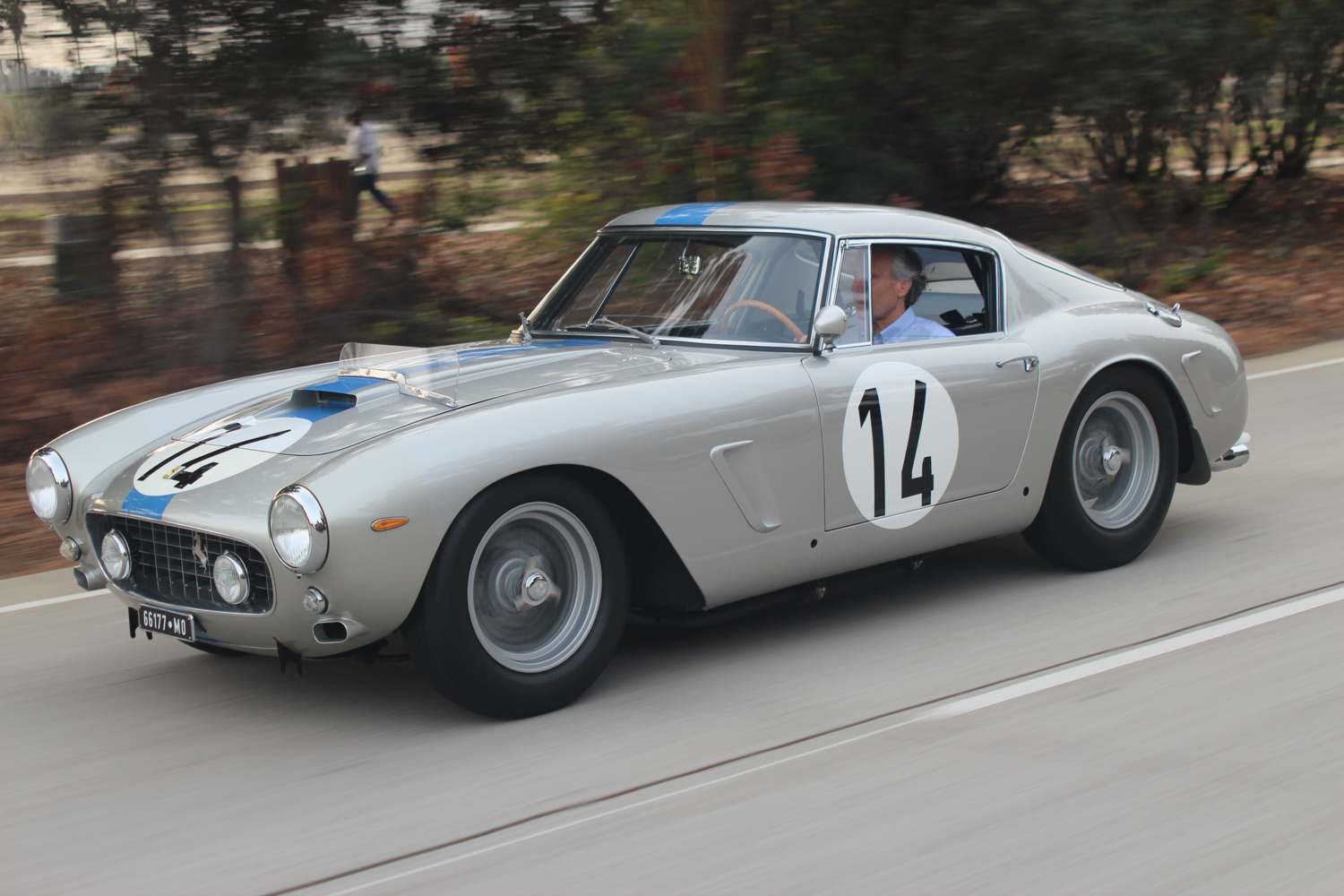Inevitably, when the name Ferrari is brought up in conjunction with racing, the first thing that comes to the average enthusiast’s mind is Formula One. After all, Ferrari has amassed 16 Constructors Championships, since World War II, more than double that of the next most winning constructor, Williams. So it’s perhaps easy to understand that in all the attention on Ferrari’s F1 program, the team’s record at Le Mans might get overshadowed.
Yet, in endurance racing’s crown jewel, the 24 Hours of Le Mans, Ferrari ranks as the third most-winning constructor with nine overall post-war victories. Unlike its Grand Prix championships, however, Ferrari’s Le Mans record is intensively concentrated in just one 10-15 year period, with victory coming first in 1949, then ’54, ’55, ’58 and then every year from 1960–1965—a true period of dominance. And yet, even this achievement is eclipsed by a Ferrari record that is all but unrecognized by both casual enthusiasts and the cognoscenti alike—that of Ferrari’s unprecedented domination of Le Mans GT category racing throughout the 1960s.
In 1955, the FIA codified its endurance racing classes and in the process gave birth to an international endurance category for Grand Touring (GT) production cars, according to engine displacement. Ferrari was well positioned for this new category having just the year before (October 1954 at the Paris Motor Show) introduced its new 250GT, powered by a Colombo-designed, three-liter V-12 engine. With the new 2,953-cc producing 220-hp and propelling a revised 2600-mm wheelbase chassis that now featured coil spring front suspension replacing the previous transverse leaf springs, the 250GT proved to be a potent two-door coupé. It is here where a subtle distinction should be noted. In Ferrari’s nomenclature of the 1950s and 1960s, a coupé (berlina) indicated a two-door, hard top version of a car that was more luxuriously kitted out as a road car, while a Berlinetta designation indicated a 2-door, hard top vehicle intended for racing. With that said, many Ferrari coupés would acquit themselves nicely in racing, as well!
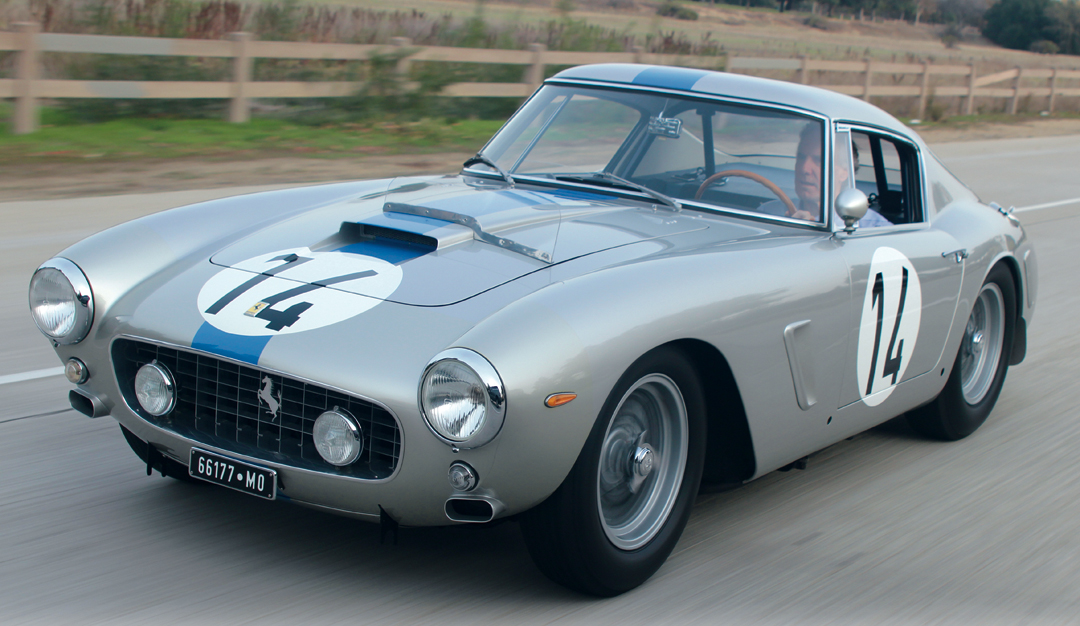

By 1956, the long-wheelbase (LWB, 2600-mm) 250GT Berlinetta was producing anywhere from 230 to 280-hp from its Type 128 V12 engine, and was racking up an impressive array of GT class victories. After Count de Portago scored a resounding victory in the grueling 1956 Tour de France, the 250GT LWB Berlinetta acquired the sobriquet “Tour de France,” or “TdF” for short, which has been associated with these cars ever since.
The year 1959 marked a significant turning point for Ferrari’s GT program for two important reasons. First, after years of disagreement between the FIA and Le Mans’ ACO organization over rules and categories, the 1959 running of the 24-hour classic would, for the first time, have a designated class and winner for GT cars up to three liters. The second significant development was a badly needed rethinking of the 250GT LWB.
While the LWB Tour de France proved to be a potent weapon in long distance GT racing, it also proved to be a handful. When engineer Giotto Bizzarini joined Ferrari, in 1957, one of his tasks would be to improve the handling and performance of the 250GT line of cars. Bizzarini’s plan was to sharpen the 250GT’s handling by shortening the car’s wheelbase by some 200-mm. Additionally, a significantly revised body was also penned to try and do a better job of cheating the wind at fast circuits like Le Mans. While this new short-wheelbase (SWB) 250GT was not ready in time for the 1959 24 Hours of Le Mans, a limited run of “Interim” cars were produced (seven in all) that featured the older Type 508 LWB chassis (2600-mm) mated with a new SWB-style body, penned by Pinin Farina and either manufactured by Pinin Farina or Scaglietti. Two of these Interim GTs were entered for Le Mans that year, alongside two LWB Tour de Frances. While the factory 250 Testa Rossas all encountered difficulties that year, the GT cars ran like freight trains and upheld Ferrari’s honor, not only winning the inaugural GT category (the LWB of “Beurlys”/“Eldé”), but also finishing a stunning 3rd overall (behind the winning Aston Martin DBR/1s). Not only did the category-winning LWB of Beurlys/Eldé finish 3rd overall, but they were closely backed up by the other three 250GTs in 4th, 5th and 6th positions overall.
Birth of the SWB
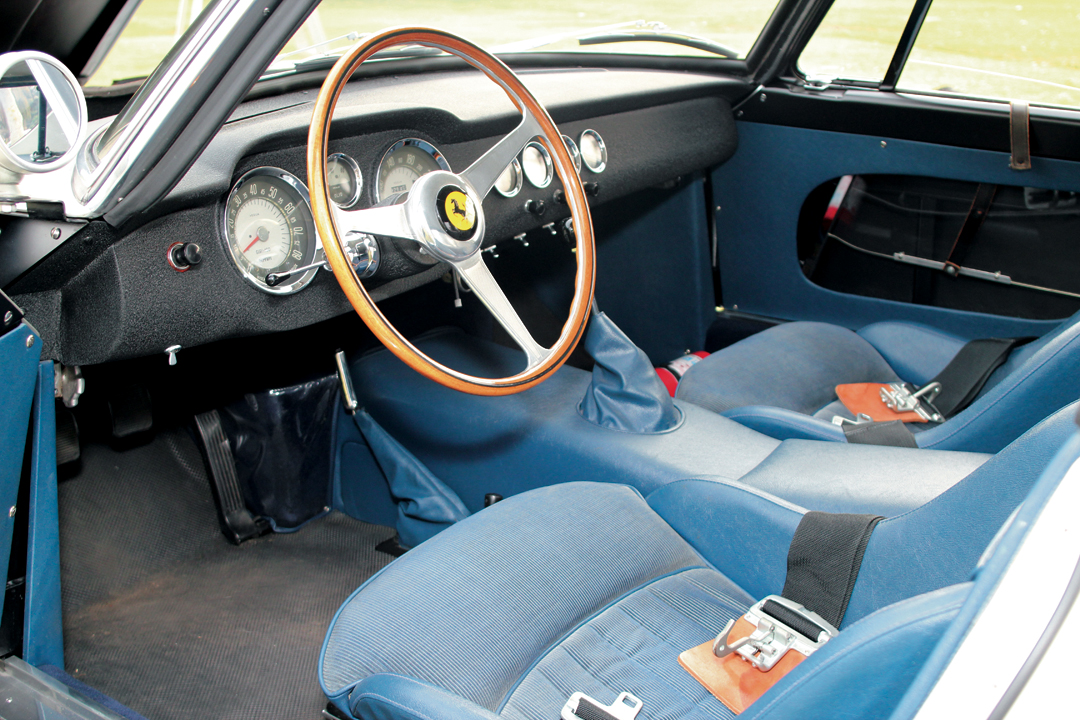

Later, in October of 1959, Ferrari unveiled to the world the new 250GT SWB (Short-Wheelbase, or passo corto) at the Paris Salon. An evolution of the LWB Tour de France, the SWB featured a new Type 539, Gilco-built frame comprised of two oval-shaped, tubular steel rails, with longitudinal bracing that retained the LWB’s front (1354-mm) and rear (1349-mm) track, but was now shortened to a wheelbase of 2,400-mm.
Power for the SWB came from an updated version of the TdF’s Type 168, 2,953-cc engine breathing through three Weber DCL downdraft carburetors. In its mildest tune (9.2:1 compression ratio), the V-12 could push 220-240-hp through its 4-speed gearbox, but over time, and in full competition specification, this unit was capable of over 280-hp at 7,000 rpm.
Customer demand had become such that, with the SWB, Ferrari began offering both a road-going Lusso and a full Competizione specification model. In the case of the Lusso model, the Pinin Farina-designed, Scaglietti-built body was constructed in more durable steel, with aluminum doors, hoods and roof, along with a more plush interior, whereas the Competizione (Comp) variation featured an all-aluminum body, minimum creature comforts and a higher output engine with a 9.7:1 compression ratio. Regardless of what variant was ordered, all SWBs came with four-wheel Dunlop disc brakes as standard—the first production Ferrari to be so equipped. Just two examples of the SWB were built in 1959, with both earmarked for competition use.
As demand and production ramped up in 1960, Ferrari built a total of 15 Lusso road cars and 45 Competizione specification cars. While the new 250GT SWB would notch up many GT category wins throughout the 1960 season, one of the highlights of the year was again the 24 Hours of Le Mans, where the Ferrari Testa Rossa of Gendebien/Frére claimed overall victory and a phalanx of SWBs finished in 4th, 5th, 6th and 7th positions overall, with the SWB of Tavano/Loustel taking home the 2.5-3-liter GT category. Other notable SWB victories that year included Stirling Moss’ win in the Goodwood Tourist Trophy, driving an SWB owned and entered by F1 privateer Rob Walker.
Enzo Builds a Hot Rod


Though Ferrari pretty much had its way in the over 2000-cc category of the 1960 FIA GT championship, Aston Martin was stepping up its game with the DB4GT, and competition from Jaguar in the form of the XKE would be just around the corner. While the SWB was unquestionably fast, Enzo wanted it faster. For 1961, engineers Carlo Chiti and Giotto Bizzarini developed a two-pronged GT offensive: while development work began on a more aerodynamically advanced 250GT (what would ultimately become the 250GTO in 1962), the team also developed a “Hot Rod” version of the SWB for the 1961 season.
While a total of 33 Lusso and 25 Competizione SWBs would be built that year, five special SWBs received a “Comp/61” package that included: a revised Type 539/61 chassis with updated rear suspension pick-up points and constructed from smaller diameter tubing with more bracing; a super-lightweight body made from 1.1-mm aluminum that featured wider wheel arches and a flat trailing edge on the side windows; an uprated Type 168B/61 engine that benefitted from cylinder heads sourced from the front-line Testa Rossas, high-lift Type 130 camshafts, three extra-large Weber 46 DCF/3 carburetors (some sources have incorrectly attributed a six-carb setup to these cars); and numerous engine castings and covers cast in magnesium. Finished off with Plexiglas side windows and virtually no interior, the Comp/61 SWB weighed some 200 pounds less than the normal Competizione model and, with the added engine tweaks, now pushed nearly 300-hp through the conventional 4-speed driveline that also now included a limited-slip differential. All up, the SEFAC Hot Rod (SEFAC was an acronym for Ferrari’s official corporate name at the time, Societa Esercizio Fabbriche Automoili e Corse), as it came to be known, could go from 0-60 in just five seconds and had a top speed of more than 160 mph.
1961 Le Mans
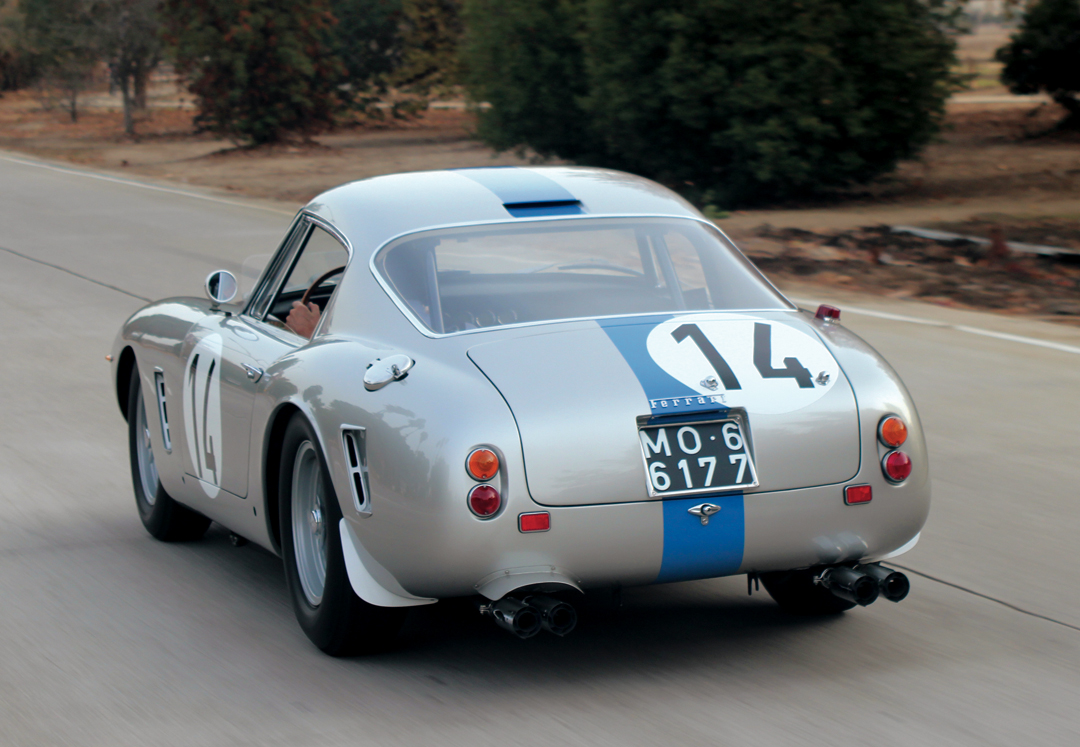

The new Hot Rod Comp/61 SWBs were delivered to customers in time for the June 10-11 running of the 24 Hours of Le Mans. One chassis (#2735GT) was sold to Rob Walker and entered for Stirling Moss and Graham Hill to drive under the NART banner. Another example (#2689GT) was purchased by French gentleman racer Pierre Noblet for Jean Guichet and himself to race. Noblet—whose family owned textile mills near Lille, France—was a long-time Ferrari customer who had raced an SWB in the previous year’s Le Mans, as well as a LWB Tour de France and other Ferraris all the way back to the early ’50s.
For the 1961 running of Le Mans, the uprated SWBs looked to be a force to be reckoned with, as the example driven by Parkes/Tavano during the April test session posted the 6th fastest time overall and was just a few seconds slower than a slew of Maserati Tipo 63 sports racers!
In the race, the blue SWB of Moss/Hill jumped out to a commanding lead in the GT category. According to Moss, “…we averaged over 118 mph for the first 1.5 hours, howling along the Mulsanne Straight at 7,700 rpm. It felt fabulous. After 21 laps my best time was 4:08.0 and that night we lay 3rd overall, leading the GT category by miles.”
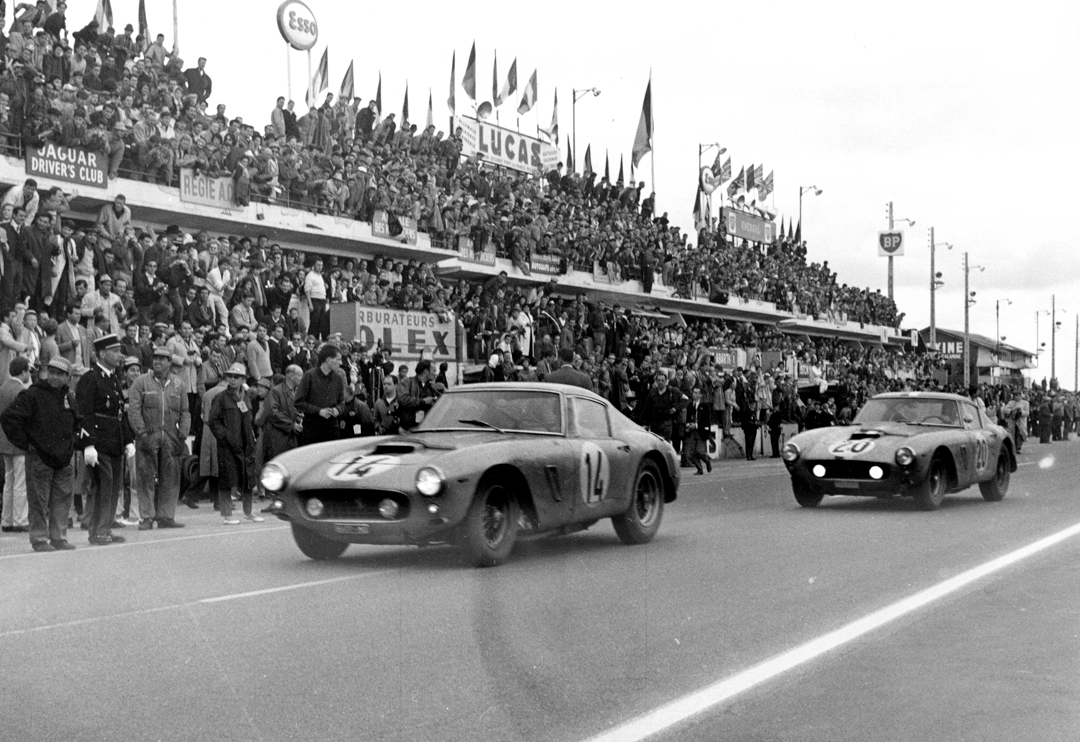

While Moss and Hill battled with the leading sports racers at the front, the SWB of Noblet/Guichet found itself steadily moving up through the top 10 as well. However, in the middle of the night, Moss and Hill’s SWB fell victim to a tragic mistake. Moss remembers, “Suddenly, in the tenth hour, the car lost all its water and boiled dry. Unbelievably, NART had not removed its standard road-going fan, and since we had been holding high revs for so long one of the fan blades had flown off and slashed clean through the radiator hose. Earlier we had led Willy Mairesse’s prototype Ferrari, which eventually finished 2nd. This stupid retirement was enormously frustrating, because it was so unnecessary and unprofessional.”
Moss and Hill’s frustration became Noblet and Guichet’s gain, as the duo continued to move up a position roughly every two hours—from 8th, to 7th, to 6th and by the time the checkered flag fell, the Comp/61 SWB of Noblet/Guichet finished a stunning 1st in GT and 3rd overall, only being beaten by the winning Testa Rossas of Hill/Gendebien and Mairesse/Parkes!
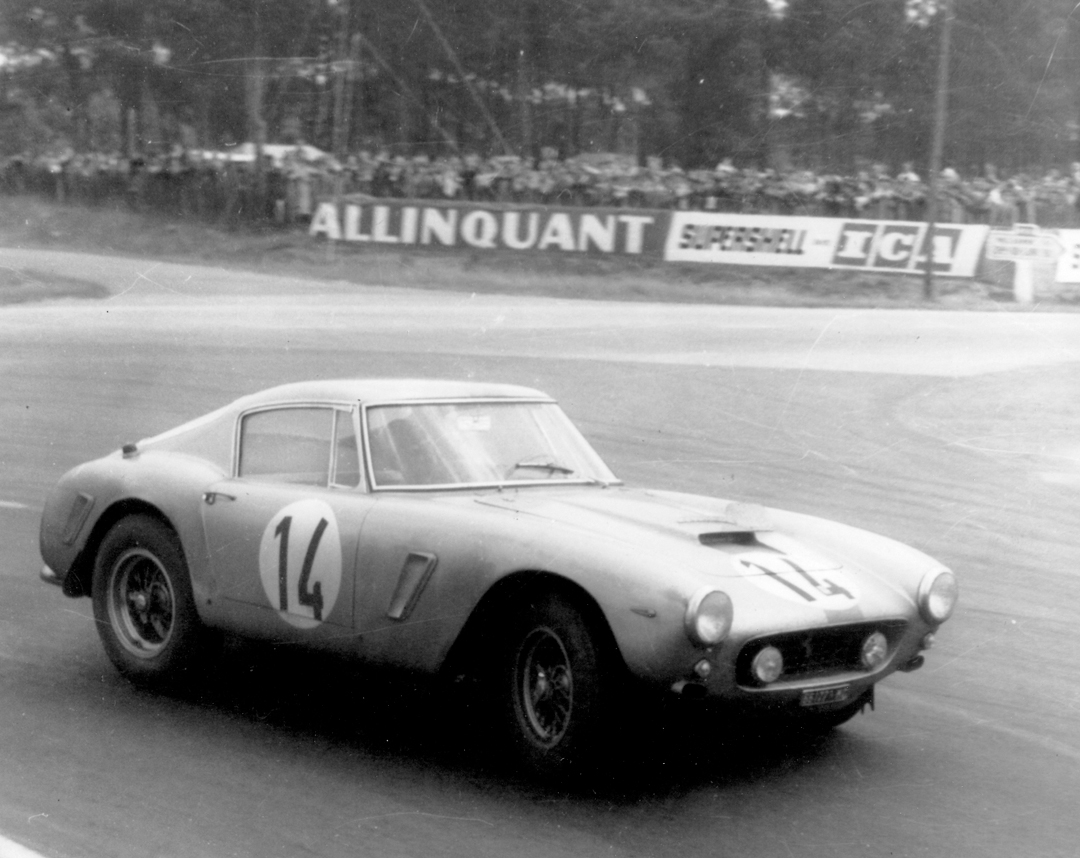

After their stunning victory, Noblet took the SWB to the Sept. 10th running of the Coppa Intereuropa at Monza, where Noblet ran in 2nd to the leading SWB of Carlo Abate, until Abate’s botched pit stop handed Noblet another surprise victory, only this time an overall victory.
On Oct. 22, Guichet ran the car in the Coupes du Salon at Montlhéry, where the SWB suffered its only DNF in its career, due to an engine failure. The following month saw Noblet and Guichet enter 2689GT in the Paris 1000-Kilometers, held again at Montlhéry, where no less than 12 SWBs were entered! Despite some stiff opposition from the likes of Jim Clark, John Whitmore and Innes Ireland in Aston Martin DB4GTs, 11 of the top 13 finishing positions were occupied by SWBs, with the SWB of the Rodriguez brothers claiming victory and Noblet/Guichet finishing 8th overall. With such commanding performances all year, Ferrari easily won the FIA GT championship for cars over 2000-cc, with Noblet finishing an impressive 9th in the FIA drivers championship.
The 1962 Season
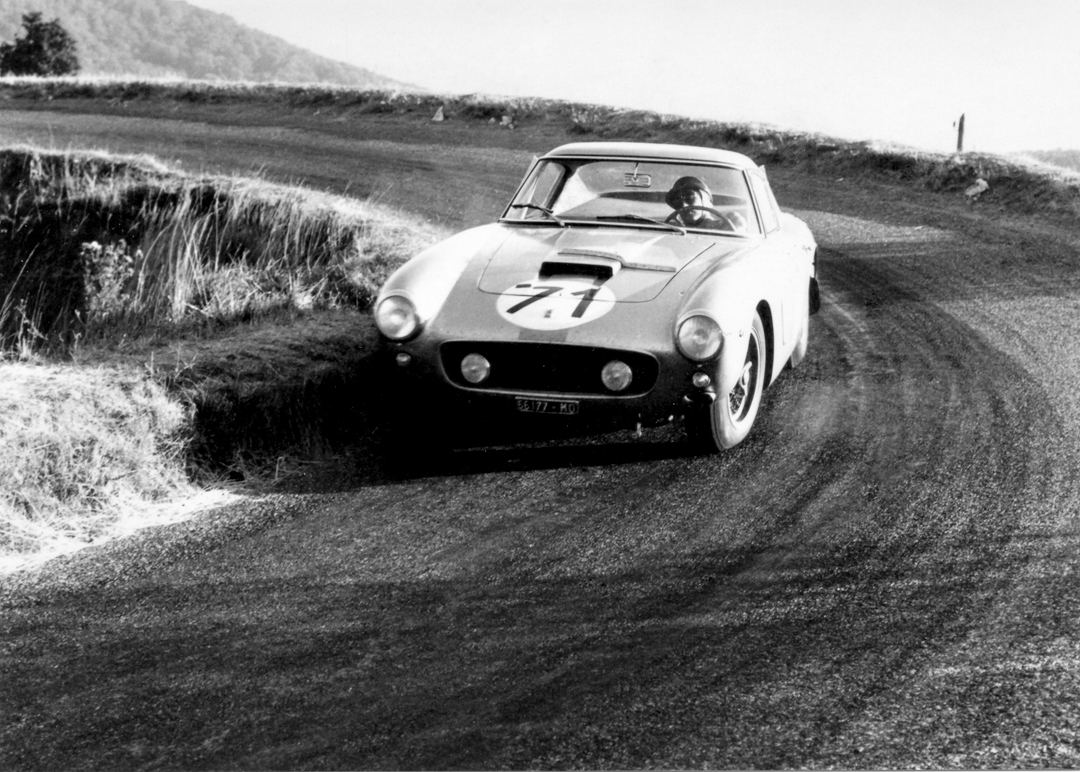

Photo: Meyer Collection
The European endurance racing season got under way on April 7-8, when Le Mans held its annual test weekend. Noblet brought chassis 2689GT to the test so that Willy Mairesse could compare it to the new Ferrari 250 GTO (chassis 3505). Driving 2689GT, Mairesse posted the fastest time of the entire test (4:07.1), nearly four seconds faster than the time he posted in the new GTO. While it’s impossible to know if this affected Noblet’s 1962 plans, he did hold onto chassis 2689GT for the start of the 1962 season, while he waited to take delivery of his own 250 GTO.
On April 15, Noblet entered the SWB in the Coupes de Bruxelles where he and the Ferrari notched up another overall victory. A month later, he entered the SWB in the support race for the Grand Prix de Spa, where he finished 2nd in class and 2nd overall. One week later, Noblet again teamed up with Guichet to campaign the Comp/61 SWB in the Nürburgring 1000 Kilometers, on May 27. At the Ring, the French duo was one-upped by another SWB driven by the German team of Seidel/Noecker, though Noblet and Guichet did finish 2nd in class and 7th overall.
At Le Mans, in June, Noblet took delivery of his new GTO, which he and Guichet drove to 2nd overall and another GT class victory. The following month, on July 15, Noblet raced the SWB for the final time in the Auvergne Trophy at Clermont-Ferrand, an FIA championship event. Noblet drove the SWB, while Guichet drove Noblet’s GTO. However, the race was won by Carlo Abate in a Ferrari 250 GTO, followed by Guichet in 4th and Noblet in 6th.
Change of Hands
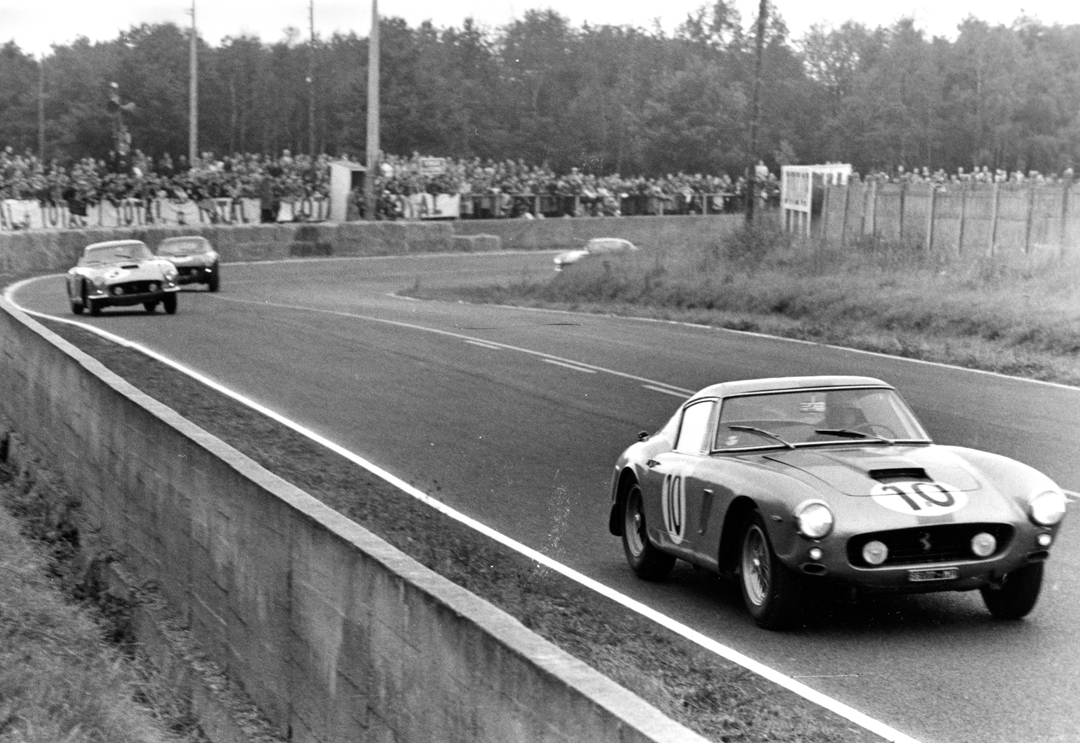

On November 28, 1962, Noblet sold 2689GT to Natalia Morabito of Rome, who in turn a year later sold the car on to Federico Martignone, also of Rome. There appear to be no records of either Italian racing the car, so it is presumed to have only been used as a road car at this point. By 1965, the SWB was sold to a gentleman in Rome by the name of Roberto Goldoni, who would often source cars for his American friend, collector Ed Niles. Niles recalls, “On June 1, 1965, I went to the dock at San Pedro to pick up my new purchase. Words like ‘shocked’ and ‘appalled’ come to mind, but words really are not adequate to describe my feelings when I first spotted my new purchase. The body was well used and in dire need of restoration, all the wheels were rusty, and came in three different sizes! The tires were worn, and what little chrome there was on the car was pure rust. Worse, when I tried to start it up I found that the carburetor throttle butterflies were frozen shut. Apparently, the car was in such poor condition when it was loaded on the ship that they left it above decks. The corrosion in the carburetors was such that I had to pound on the butterflies with a large screwdriver and a hammer, eventually succeeding in getting two of the three carburetors to function. In disgust, I drove the car home on eight cylinders. I had to drive with one hand, as my left hand was needed to hold the door closed! Not too long ago, I had lunch with my old friend Bob Goldoni, who confirmed that Pierre Noblet—after he had used the car in a number of competition events—had sold it to his friend’s father for the use of his young friend and his pals. The car was driven all around Rome by Goldoni’s pal and many other young people, and the most rudimentary knowledge of traffic in Rome will certainly explain the condition of the car when I received it.”
Shortly thereafter, Niles sold the Ferrari to Anthony Tersigni (a friend of Niles’ mechanic) for the princely sum of $4,000. From Tersigni, the car was subsequently sold to Michael Pokorni, then Bob Solomon and then John Upton. Upton took on the daunting task of restoring the SWB and ended up holding on to the Ferrari until 1993 when he sold it to Robert Baker. From Baker the SWB went to Kerry Manolas in Australia (’96), then Michael Pearson in the UK (’98) and then Greg Whitten back in the U.S. (’00) before being bought by its current owner, Southern Californian Bruce Meyer in 2003.
Driving the Comp/61
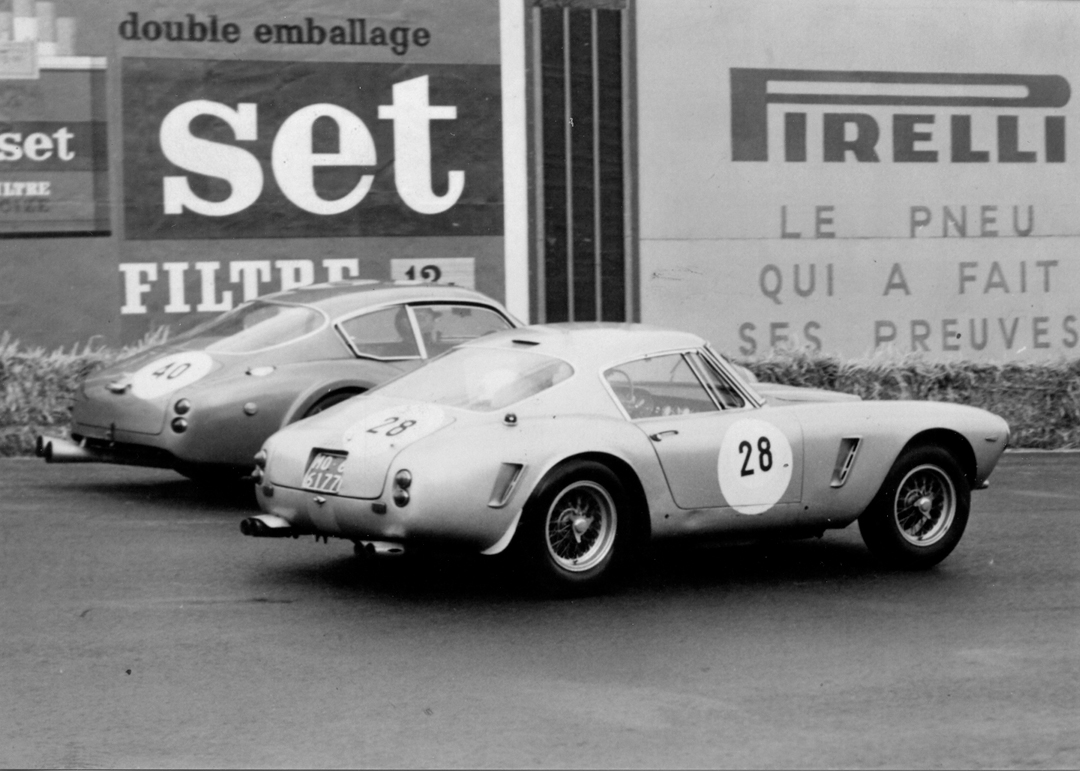

Photo: Meyer Collection
Walking up to Meyer’s metallic silver Ferrari, there are tell-tale signs that this is no “garden variety” SWB. The hood has a Plexiglas air deflector mounted on it, the right-rear fender has a prominent red signaling light and the left-side bank of exhaust tips have a unique bodywork “awning” over the top of them to protect from fuel spills made possible by the large, fast-fill cap located above on the left-rear fender. While superficially, this SWB looks like any number of road going Ferraris—and, in fact, is street legal!—all these little details are indicators of a car with a serious endurance racing pedigree.
Pushing the small button to open the driver’s side door, I’m almost startled by how delicate and almost flimsy the door feels. Essentially just 1.1-mm of aluminum, draped over a minimal frame, the door is a tactile reminder of how the Comp/61 SWB was put on a major diet to help wrest as much speed out of the Berlinetta as possible.
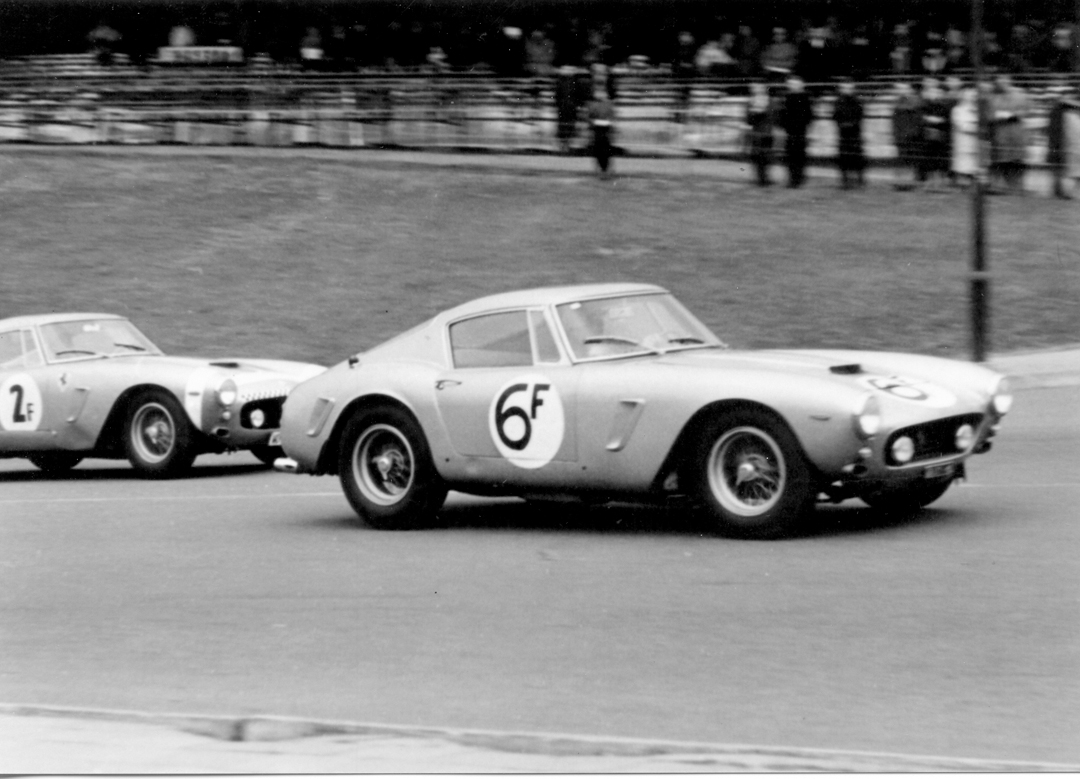

Photo: Meyer Collection
Climbing into the enveloping, low-back bucket seats, I gingerly pull the door closed—almost afraid to exert any force on its vestigial inner panel—and peer out over the black, crinkle-finish dashboard. The seating position is surprising low as you take in what is a truly minimalist interior. Aside from the sensuous, wood-rimmed Nardi steering wheel, there is just a quartet of gauges behind the wheel, with four more small gauges lined up in the center of the dash. Grabbing the key, mounted in the center of the dash, I spin it through 180-degrees to turn on the ignition and then push it straight in to engage the starter. The engine rolls over so smoothly, I mistakenly think that the starter motor hasn’t engaged the flywheel. Meyer explains that the trifecta of big 46 DCL Webers are a little temperamental at start-up, so I should get the engine spinning and then just crack the throttle open. Re-engaging the starter, I give the accelerator two short jabs and the Colombo V12 barks to life and settles into a satisfying, gurgling growl.
After pushing in the clutch, which is mounted relatively high up on the firewall, I pull the delicate, but high-mounted, black gear lever knob back into second and then into first (strangely, a consistent idiosyncrasy of nearly every Ferrari gearbox from 1949 through to the ’80s), carefully feed in a small amount of gas and gently ease out the clutch. Smoothly, and without fanfare the Comp/61 just raises its voice as it pulls away. Cruising down an access road in first gear, I’m almost immediately struck by a wave of heat over my feet and legs. With all the insulation and sound deadening removed for weight savings, no driver would ever go cold in the Comp/61!
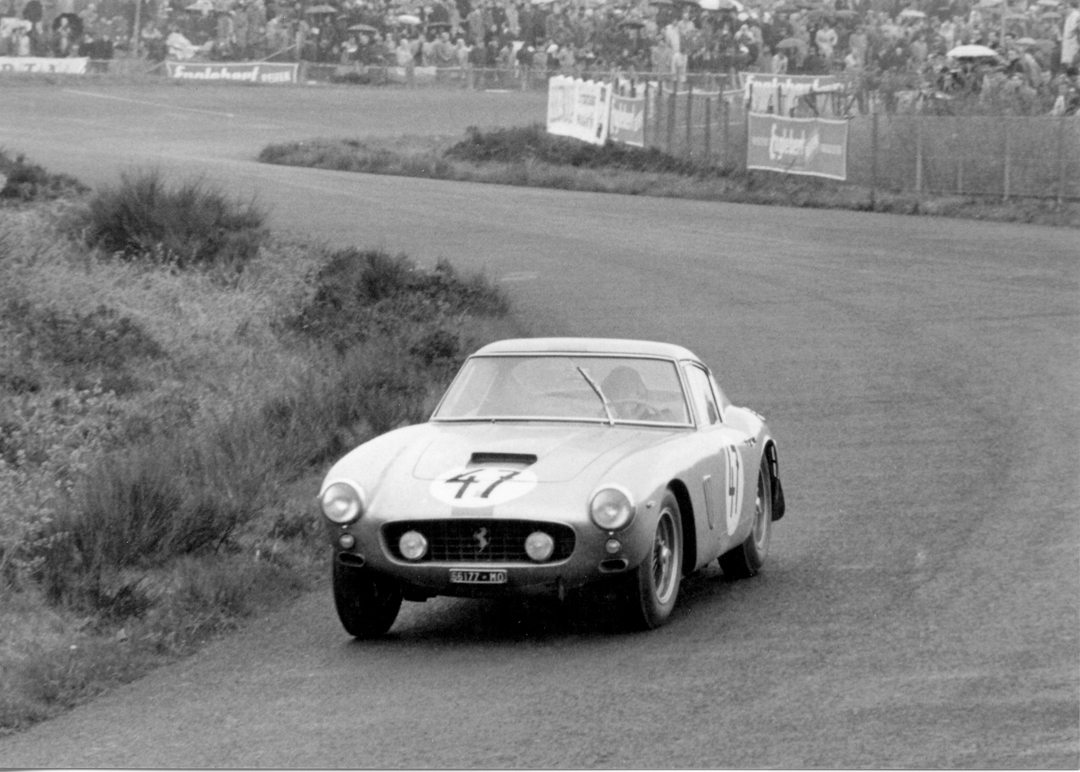

Once out on our test section, I squeeze the accelerator in first gear, which is met by a brief moment of hesitation, before the big Webers gather themselves and the Comp/61 surges forward with a satisfying roar. Unhappy at partial throttle, these carbs prefer to be either open or closed, but are at their happiest when either wide open, or at least accelerating hard. Running up through the gears, the Comp/61 literally comes alive. The acceleration is surprising for a GT car of this displacement and vintage. The combination of what is essentially a 300-horsepower Testa Rossa engine, with a stripped down, super-lightweight chassis makes the Comp/61 feel like it punches way above its weight class.
As the speeds increase, the SWB’s handling gets very light and reactive. This is especially noticeable as the car tramlines over joints in the roadway. Compared to long-wheelbase examples I have driven, the shortening of the chassis by some 200-mm really made the 250GT a much easier to drive and responsive car. Turn-in and weight transfer is quick and precise, without its predecessor’s ponderous feeling that the entire car is heeling over to change direction. This is, in part, made possible by the car’s amazing 49/51 front to rear weight bias. John Bolster summed it well in his 1960 Autosport test drive, when he remarked, “This is an outstandingly easy car to drive and the short wheelbase renders it noticeably handier on corners. Even very fast cornering is completely without drama, and one can remain totally relaxed while really sliding through the bends.” If the Comp/61’s handling has a shortcoming it is that the turning radius is pretty large, for such a short car, but that was never a concern at Le Mans, where top-speed and high-speed cornering were the ultimate goals.
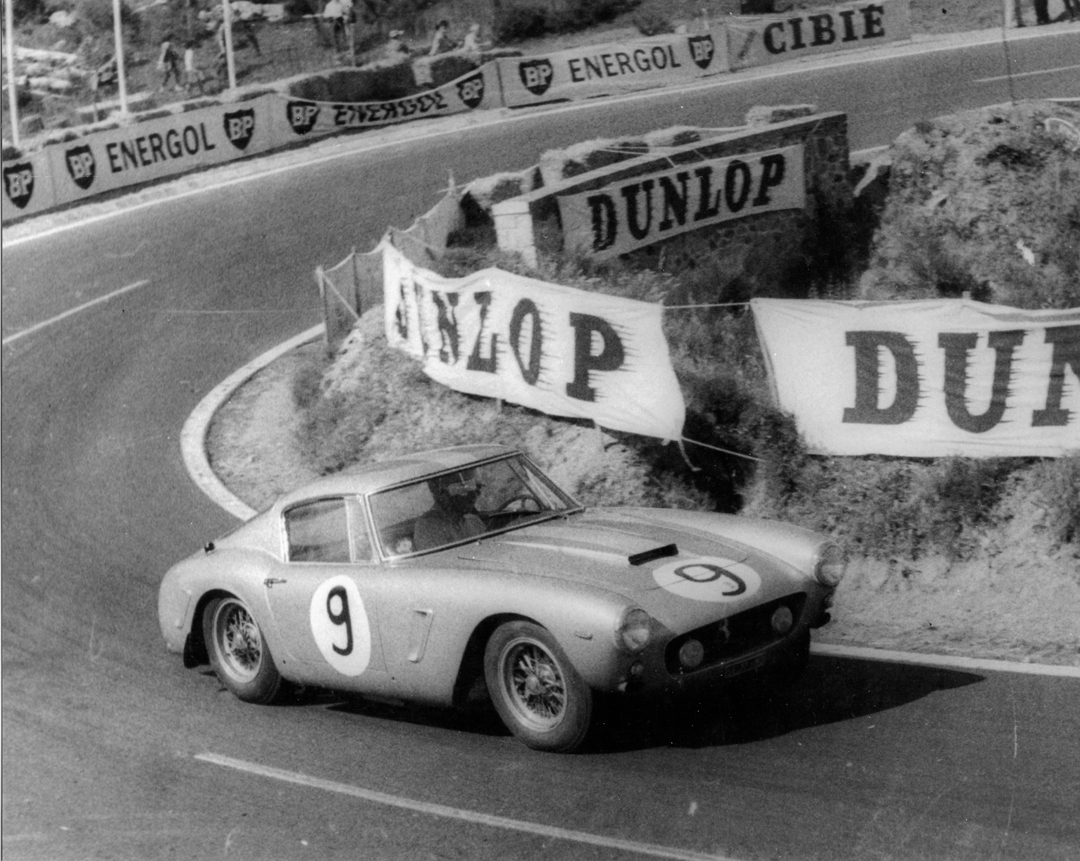

Slowing down for turns in this car is a delight for two reasons. First, the car’s light weight, combined with the adoption of disc brakes, enables the SWB to pull up with confidence and authority. Perhaps the greatest satisfaction of the whole experience, though, is the auditory joy made while toe-and-heeling one’s way down through the gears. The sound of that V12 on the overrun is like a shot of aural heroin to an automotive junkie.
Pulling back into the access road, the Comp/61 obediently burbles its way along in first gear, until I shut her down with one last, gratifying stab of the accelerator pedal. While it would have been a hot 24 hours behind the wheel at Le Mans, it is easy to see how the likes of Moss, Hill, Noblet and Guichet could have handily decimated the GT field…and an enormous chunk of the prototypes! The small handful of Comp/61s produced really did prove themselves to be Enzo’s ultimate Hot Rod.
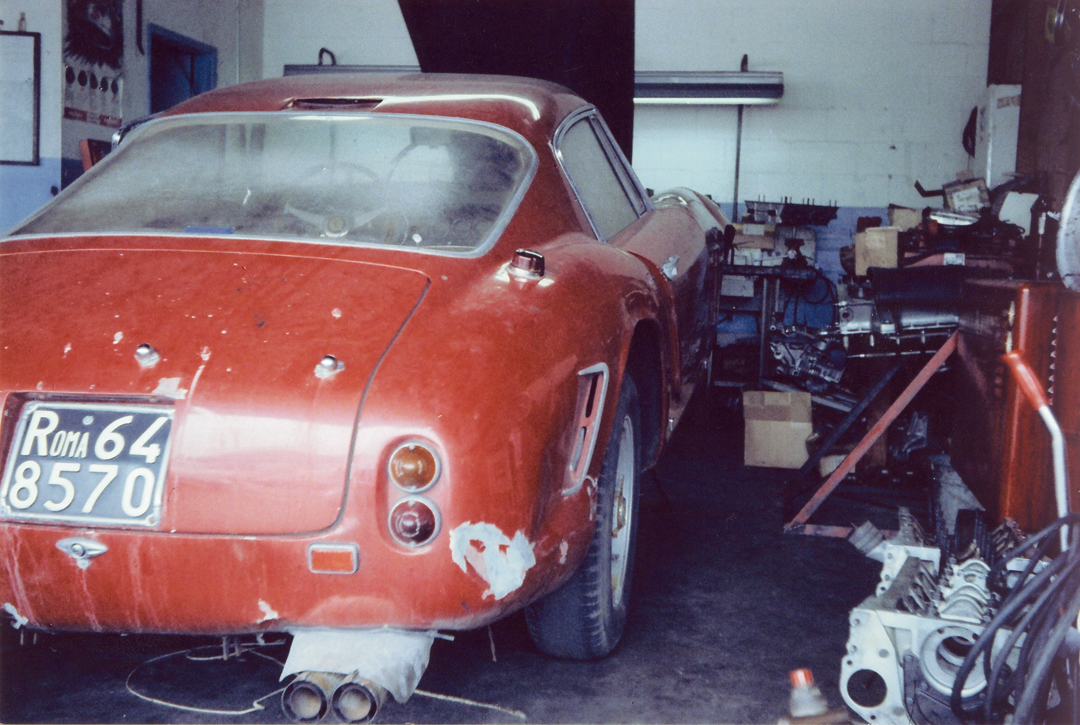

SPECIFICATIONS
Chassis: Ladder-type
Wheelbase: 2400-mm
Length: 4150-mm
Width: 1690-mm
Front Track: 1354-mm
Rear Track: 1349-mm
Height: 1260-mm
Weight: 2395-lb
Front Suspension: Double Wishbones with Coil Springs
Rear Suspension: Live Axle with Leaf Springs
Engine: 2,953-cc, Type 168B/61, Colombo V-12
Bore x Stroke: 73-mm x 58.8-mm
Compression Ratio: 9.7:1
Induction: Triple Weber 46DCL/3
Power: 295-hp @7,000 rpm
Transmission: 4-speed
Brakes: 4-wheel Dunlop disc
Wheels: 15-inch Borrani wire
Resources / Acknowledgements
Bizzarrini: The Genius Behind Ferrari’s 250 GTO, Olczyk, P., Deep Research Baku, 2008, ISBN 978-9952-8002-4-1
Ferrari: 1953-1963, Brooklands Books, ISBN 1-85520-3847
The Le Mans 24-Hour Race, Edita S.A., 1974, ISBN 0-8019-6290-0
The Complete Ferrari, Eaton, G., Cadogan Books, 1986, ISBN 0-947754-10-5
The Ferrari Legend: 250 GT Competition, Pourret, J., J.W. Barnes Pub., 1977 ISBN 0-91482211X
Time and Two Seats, Wimpfen, J., Motorsport Research Group, 1999, ISBN 0-9672252-0-5
Stirling Moss: My Cars, My Career, Moss, S., Nye, D., Patrick Stephens Ltd., 1987, ISBN 0-85059-925-3
The author would like to thank Tom Kenney, Ed Niles and Alan Boe for their help and input with this article. Of course, a deep gratitude must go out to Bruce Meyer for his years of enthusiastic support and trust.
